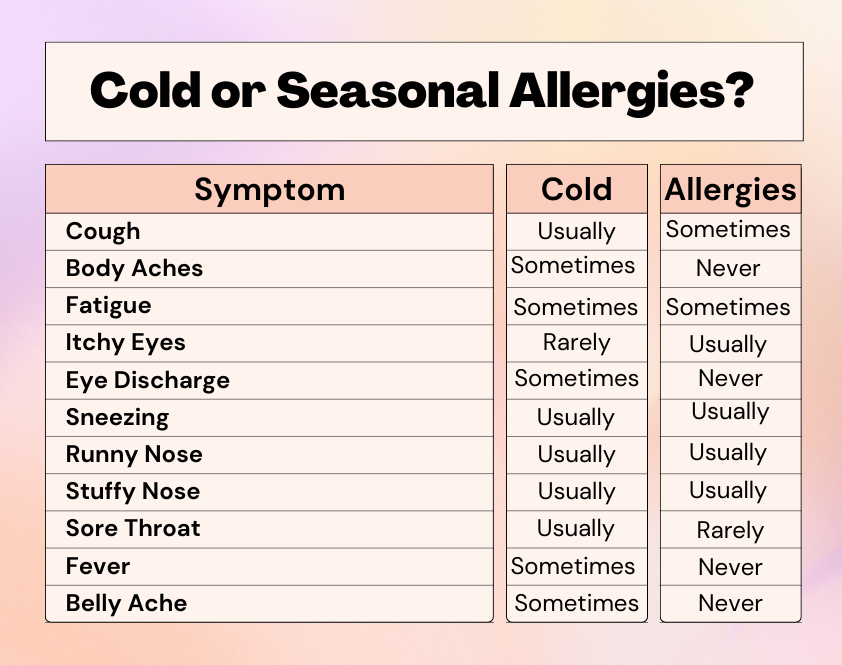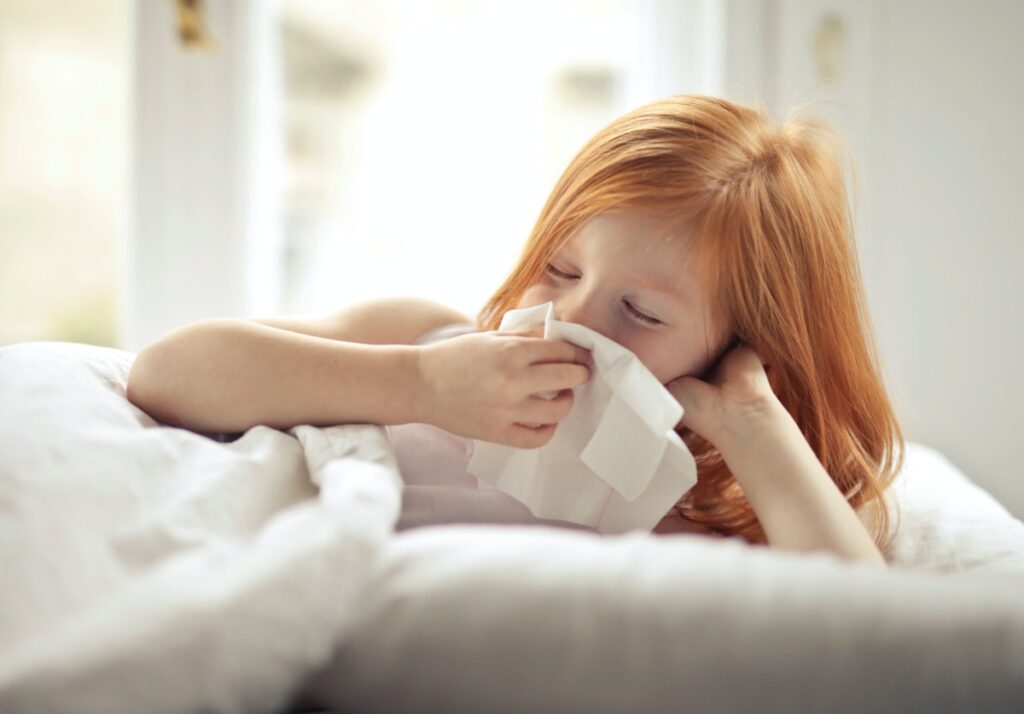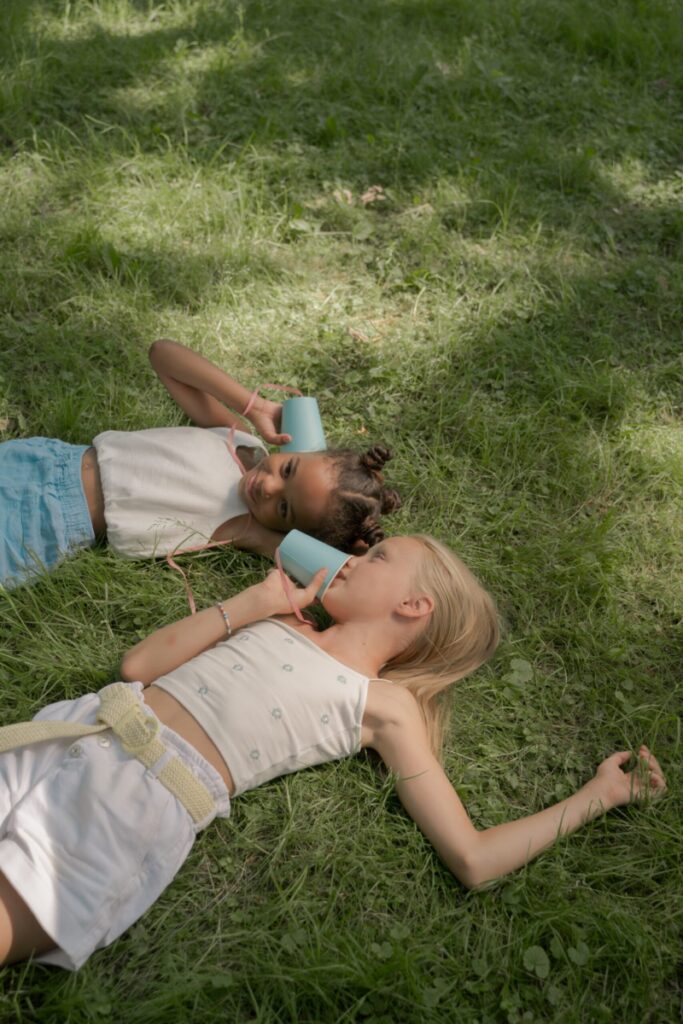How to tell if its Allergies or a Cold
Spring and summer bring so many wonderful things, sunshine, warmer weather, beautiful flowers, and the promise of fun in the sun! But for many of us and our kiddos, it can also signal the start of allergy season. If your child has not been diagnosed with seasonal allergies before, it can also be confusing for parents to determine whether they are experiencing a cold or allergies. This is understandable since many of the symptoms overlap! Unfortunately, even though allergies are relatively common, there are a lot of misconceptions! Read on for more information about allergies and helpful ways to determine whether your child’s symptoms are due to allergies or a cold.
What are seasonal allergies?
Allergies develop when the immune system has an overreaction to something. Symptoms develop due to the release of histamine from specialized immune cells. There are many different types of allergies, including allergies to foods, plants, dust, pets, specific materials, etc. Seasonal allergies usually refer to a reaction to various plants, trees, or pollen. Some peak in spring, others in summer/early fall. Indoor allergies refer to allergies to dust, pet dander, etc.
What are the symptoms?
Common seasonal allergy symptoms include watery, itchy eyes, stuffy or runny nose, and sneezing. That being said, other symptoms can occur as well. There is overlap between allergy and cold symptoms with some key differences. The table below is a helpful comparison between cold and allergy symptoms.

How old is your child?
Seasonal allergy symptoms usually start at the earliest between the ages of three and five years. It is not common for symptoms to occur before two years of age since allergies require exposure and sensitization to these seasonal triggers in order to develop an allergy to them. Indoor allergies can start younger, such as at age one. Allergies can also develop in older childhood or adulthood and vary each season and in different regions.
In what settings do symptoms get worse?
If your child suddenly develops a runny nose and sneezing, it can often be tricky to tell whether it is a cold or allergies. However, if symptoms aren’t as significant in the morning and then flare up when playing outside, particularly in areas with lots of grass, flowers, trees, and pollen, that is more indicative of seasonal allergies. Cold symptoms are often worse while lying down and first thing in the morning and evening.

How long do the symptoms last?
Cold symptoms typically peak between 3 and 5 days and usually resolve in 7-10 days. Depending on the trigger, seasonal allergy symptoms will wax and wane over a few weeks to months.
Do other family members have allergies?
Often, a family history of certain allergies can increase the risk of children developing them.
So how can you know for sure?
The best way to determine whether your child has seasonal allergies is to talk with their pediatrician. In some cases, they may recommend allergy testing or a trial of an antihistamine.
How are allergies treated?
In most cases, seasonal and indoor allergies can be treated with an over-the-counter antihistamine. One of the better-known antihistamines is Diphenhydramine (Benadryl.) However, this is not the best choice for children as it has side effects like drowsiness and does not have a long duration of action. Talk with your pediatrician about better options for kids, such as loratadine (Claritin), fexofenadine (Allegra), or cetirizine (Zyrtec). Antihistamines work better if used before symptoms flare up rather than after. So if it is allergy season and your child has allergies, start their medications and give them consistently as directed until peak season has ended. Weather reports often include information about mold and pollen counts during allergy seasons. Depending on symptoms, your healthcare provider may also recommend eye drops and/or a nasal spray like fluticasone (flonase.) Other things that can help are avoiding triggers if they are known, keeping windows and doors shut when at home, showering, or bathing your child after playing outside. In more severe cases or when symptoms do not improve with the methods mentioned above, your doctor may recommend immunotherapy, commonly known as allergy shots.
We hope this helps clear up some of the confusion around allergies! Wishing you and yours a healthy and happy Spring and Summer!
More great resources to check out below:
American Academy of Allergies Asthma and Immunology
Seasonal Allergies in Children – AAP
And if it turns out your little one has a cold, check out our home remedies here.





